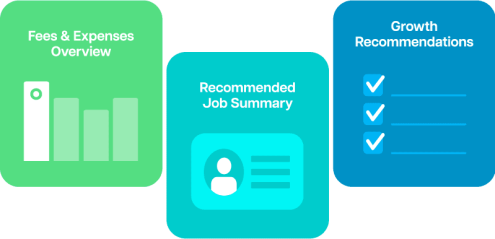Why Outsourcing Payroll is a Game-Changer for Business Efficiency
Intern Marketing
on
November 29, 2024
Efficient payroll management is the backbone of a well-run business. However, navigating tax compliance, evolving regulations, and maintaining accuracy can be overwhelming, particularly in lean accounting teams. By addressing these pain points, businesses can ensure smoother operations and better resource allocation.
Outsourcing the business’s payroll simplifies this process. Staff Domain understands that in leveraging strategic solutions, such as outsourcing payroll services, businesses can navigate these complexities while maintaining compliance and operational efficiency.
In this article, we underscore the possible appeal of payroll outsourcing to businesses, the benefits it provides, and how it can streamline payroll processes.
The Appeal of Payroll Outsourcing
a. Cost Efficiency
b. Time-Saving Benefits
c. Scalability

Key Factors Behind the Popularity
1. Access to Expertise
2. Enhanced Accuracy and Reliability
3. Technological Advancements
4. Data Security and Confidentiality
Benefits to Businesses
a. Improved compliance and risk management
b. Employee satisfaction
c. Competitive advantage
Streamline Payroll with Expert Offshore Outsourcing Solutions
Outsourcing payroll has become a practical and efficient solution for many businesses. This strategy makes it easy to streamline operations, reduce costs, and stay compliant with ever-changing regulations. Offshore outsourcing the payroll services helps companies avoid the complexities of tax filings, benefit management, and compliance checks, which often require specialised knowledge and resources.
As more organisations recognise these benefits, the trend towards outsourcing payroll services is set to grow faster. As global payroll management remains complex and the rise of remote workforces continue, businesses need scalable and flexible solutions to manage payroll across different jurisdictions.
Staff Domain is one such provider that offers tailored payroll outsourcing services, helping businesses save time, reduce administrative burdens, and improve operational effectiveness. By partnering with experts like Staff Domain, you can focus on your core operations while ensuring compliance with local and international regulations.
Staff Domain‘s offshore outsourcing solutions connect your business to a highly experienced global talent pool for game-changing results. Effortlessly manage your offshore workforce with our comprehensive compliance, payroll, and HR support, and benefit from fixed, transparent pricing in your local currency. Contact us today or schedule a meeting with our sales team to quickly source the right offshore team for your business.

























